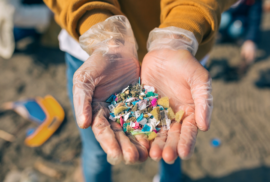Pam Taylor: 2016 Petoskey Prize winner
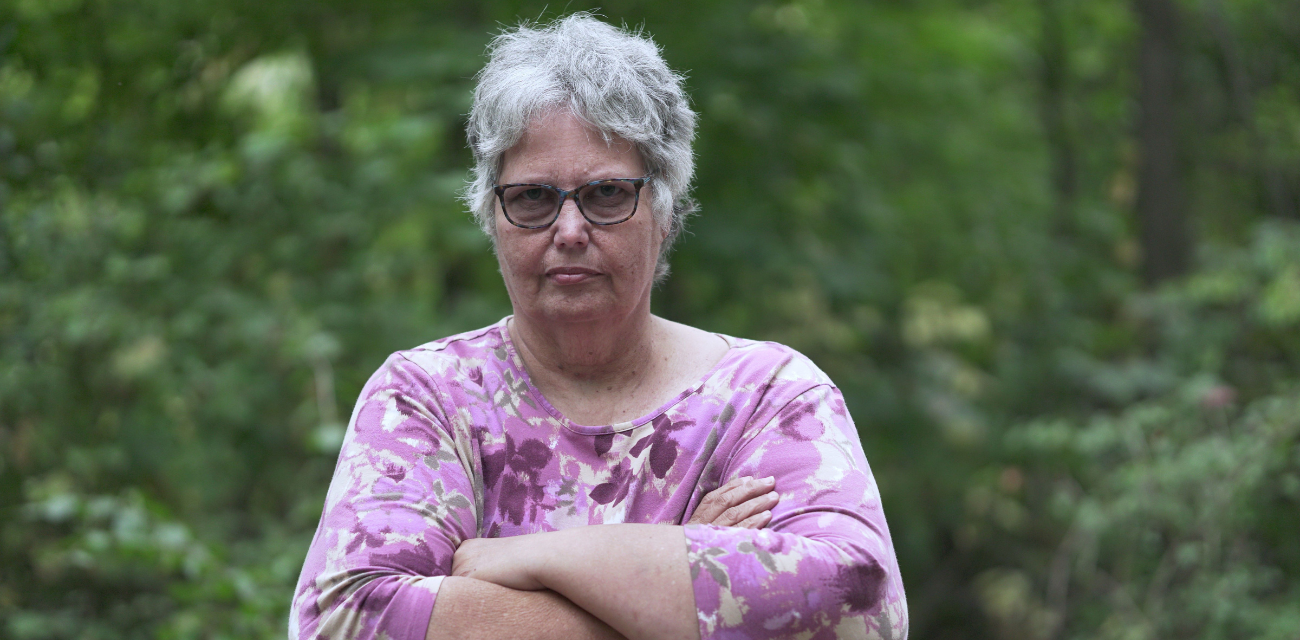
Pam Taylor has a habit of naming things. She drives Lenawee County’s dirt roads in a black Ford Focus called the Batmobile, singing along to Motown music–her favorite. Excalibur is a store-bought extension pole, modified by her mentor to reach into rivers and take water samples. And the trucks hauling trailer loads of cow manure away from massive dairy barns? “We call those poop wagons,” she says.
But when it comes to the area’s many concentrated animal feeding operations, or CAFOs, Taylor drops the playful language and gets more precise.
“Ultimately, this is not farming,” she says of the industrial feedlots crammed with hundreds or thousands of livestock. “It’s industrial waste production. They produce more manure than milk.”
As passionate about justice as she is meticulous in its pursuit, Taylor has been instrumental in efforts by Environmentally Concerned Citizens of South Central Michigan–where she volunteers some 40 hours a week–to show that manure from Michigan CAFOs is polluting local waterways and fueling Lake Erie algae outbreaks.
The data she has helped to collect, compile and convey to the public makes a powerful case that voluntary measures are not enough to stop the degradation–that only tough regulations can undo the damage from unsustainable, industrial-scale agriculture.
While state regulators have been slow to acknowledge clear evidence of pollution or hold CAFOs accountable for permit violations, Taylor’s colleagues and other advocates have taken note of her dedication and unimpeachable credibility, and call her richly deserving of the 2016 Petoskey Prize for Environmental Leadership.
“Like many others who see nutrient pollution as a grave threat to the Great Lakes, our staff have come to recognize Pam Taylor as a go-to source for accurate information on how factory farming impacts water quality,” says Chris Kolb, Environmental Council president. “The policies needed to fix this problem can only be built on a foundation of rock-solid data, and that’s why it’s so important that Pam is busy laying that foundation while arguing passionately for common-sense reforms.”
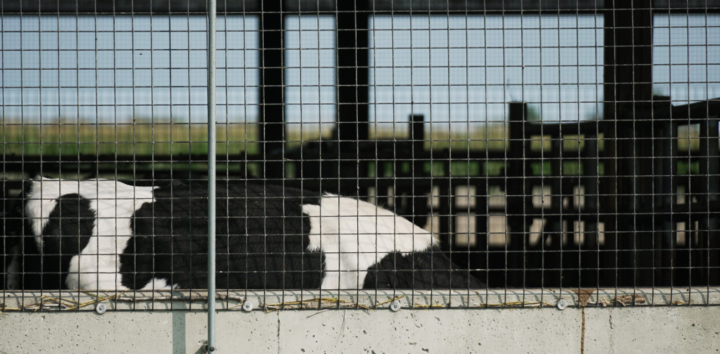
Follow the manure
Megafarms in Michigan’s portion of the western Lake Erie basin–which also includes parts of Ohio and Indiana–produce waste equivalent to the output of Boston.
CAFO operators store manure in pits, and spray it on nearby fields from trucks, tractors or irrigation systems. Far from the valuable resource small farmers shovel from barnyards to fertilize crops, CAFO manure is a slurry with a sickening smell. Repeated exposure to the ammonia, hydrogen sulfide and other chemicals emitted by the slurry raises the risk of respiratory illness, according to the Centers for Disease Control and Prevention. Taylor knows several people living near CAFOs whose health has suffered.
The liquid manure is also packed with phosphorus–a necessary nutrient for plants that also feeds algae. Heavy rains or spring thaws whisk manure into creeks that feed major rivers and eventually flow into Lake Erie. That’s bad news because manure runoff is a major source of dissolved reactive phosphorus. Unlike particulate phosphorus used in chemical fertilizers, the dissolved variety doesn’t settle to the bottom–it stays suspended in the water, providing a feast for algae.
Case in point: the 2014 toxic algae outbreak in western Lake Erie that left 400,000 Toledo-area residents without safe drinking water.
When Taylor dug into the research on that crisis, she found several reports concluding that manure played a relatively insignificant role. That didn’t sit right with her. How could manure–which farmers are allowed to apply to fields at four times the phosphorus load as chemical fertilizers–not be a major factor?
Taylor traced each footnote in each report back to the data sources and found that estimates of manure volume were based on CAFO livestock numbers that were, in some cases, more than a decade old. “CAFOs really bloomed in that decade here,” she says. “So it became apparent to me that nobody had current numbers.”
The reality wasn’t that manure played a small role in the 2014 outbreak. It was that no one knew how much manure–or even how many CAFO livestock–were in the western Lake Erie basin.
“People said, nobody knows. That it wasn’t knowable,” Taylor says. “Well, it is knowable.”
Using the Freedom of Information Act to obtain the latest figures from the Department of Environmental Quality on how many animals were housed at each CAFO–numbers the facilities are required to submit, but which the department hadn’t compiled in any useful way–she built a database providing the first comprehensive picture of CAFOs in the River Raisin and Maumee River watersheds.
The results were astounding. One expert Taylor consulted estimated that 40,000 cows lived in the two watersheds, but Taylor found 11 million CAFO animals in the Ohio and Michigan portions alone. Based on government figures for average per-animal output, that’s 588 million gallons of manure each year.
Taylor was just getting started. Working with the Sierra Club-led Less = More coalition, she helped to build a database for the entire three-state western Lake Erie basin, based on more than 300 FOIA requests. The resulting report, Follow the Manure: Factory Farms and the Lake Erie Algae Crisis, revealed that 146 CAFOs in the basin housed 12 million animals and produced 630 million gallons of manure and waste annually. The 14 CAFOs in Michigan’s portion of the basin represent less than 1 percent of the watershed’s factory-farmed animals, but contribute close to 20 percent of the manure flowing into it.
The report also showed that $16.8 million in federal subsidies poured into the basin’s factory farms between 2008 and 2015, even as they racked up 230 environmental permit violations, including 112 illegal waste discharges.
And it showed that taxpayer-funded conservation efforts like buffer strips and no-till farming, designed to capture and filter runoff from the land surface before it reaches waterways, are being short-circuited by drain tiles–underground pipes that rush water off fields so that heavy equipment doesn’t get bogged down in mud. Like tunnels under a castle wall, the tiles allow dissolved phosphorus to bypass the buffers.
Researchers are now coming to understand that as much as 80 percent of the dissolved reactive phosphorus feeding Lake Erie algae comes from drain tiles, instead of surface runoff. The CAFO data Taylor and colleagues compiled–and their observation that conservation subsidies haven’t improved the health of oxygen-starved creeks that are still choked year after year with algae and dead fish–provided in-the-field confirmation of emerging academic wisdom.
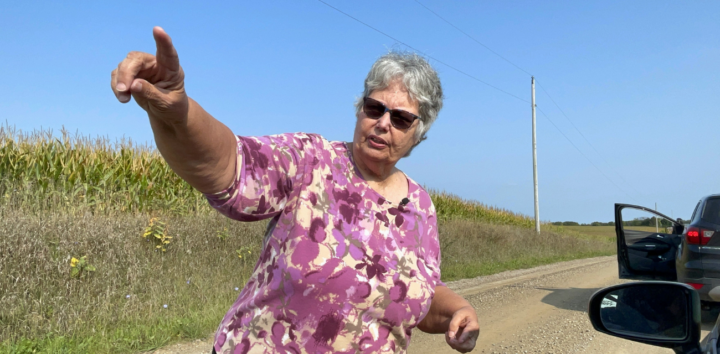
Total denial
Water sampling to track CAFO pollution is nothing new to ECCSCM. What’s different is scientific rigor and attention to detail Taylor–a former high school math and computer teacher–has brought to the group.
“She’s relentless about getting things done correctly, and that’s not necessarily how I always operate,” says John Klein, the group’s president. “I believe she has brought more credibility to our organization. We have not had one person or organization question our data. It’s pretty incredible that no one’s really denying the information we’re presenting.”
Unfortunately, if state regulators haven’t denied the group’s findings, they also haven’t responded in any meaningful way. While Taylor believes Ohio is getting serious about phosphorus, she says the Michigan Department of Environmental Quality has gone out of its way to avoid holding CAFOs accountable for violations. The department regularly declines to take its own samples when ECCSCM finds clear evidence of violations. In some cases, Taylor says, DEQ fails to even test the samples it does take.
“Michigan isn’t paying attention at all, as far as I can see,” she says. “Total denial.”
Taylor says one way to bring about real change to reduce pollution from CAFOs is to officially designate western Lake Erie as “impaired.” She is among those calling on the EPA to issue that designation under the Clean Water Act, which would trigger a detailed study of pollution sources and enforcement actions against polluters that exceed phosphorus limits.
Meanwhile, ECCSCM’s water sampling results are startling. Through October of 2015, three-quarters of samples had E. coli bacteria levels too high for safe full-body contact; 70 percent met or exceeded state standards for ammonia; and 100 percent had phosphorus levels at or above what’s considered “of concern” for aquatic life. The group has documented some 4,700 permit violations and illegal discharges from CAFOs.
“We used to have streams and creeks people could fish in and swim in,” Taylor says. “No more. It doesn’t exist. It’s almost like a robbery or a violation of something.”
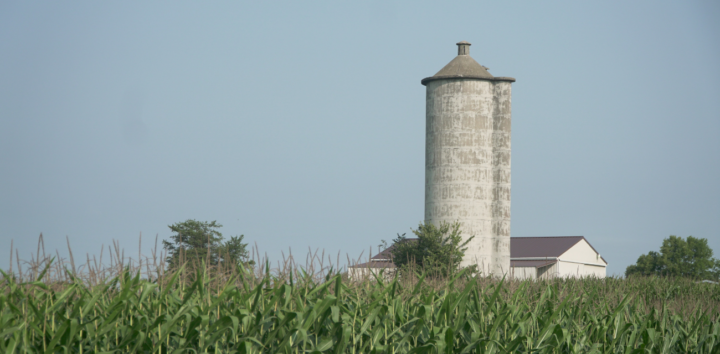
Deep roots
Ride along in the Batmobile and it’s immediately apparent that Taylor has a bone-deep knowledge of the region. That’s what you get when your family has been here as long as Michigan has been a state.
Taylor’s family settled in Lenawee County in 1837. The Riga Township farm she owns with her parents and brother has been in the family 115 years. Relatives born in the 1700s are buried a couple of miles away.
Growing up, Taylor was embarrassed by her family’s old-fashioned approach to agriculture. While neighboring farmers were going big–big loans to buy big tractors and big acreage–her grandfather kept things simple and sustainable.
“Now those folks are bankrupt, and he died with a lot of money,” Taylor says. “I just feel so blessed and fortunate to have been raised with his values.”
Taylor sold the family home after she and fellow concerned citizens were unsuccessful in blocking plans for a 60-million-gallon-per- year corn ethanol plant nearby. During that fight, she met farmer, environmental advocate and ECCSCM volunteer Lynn Henning–herself a Petoskey Prize recipient in 2007–who became a mentor (and later gave Taylor the cherished water sampling rod she calls Excalibur). Taylor’s interest in ECCSCM’s work grew, and she began volunteering in 2012.
Since then, the Batmobile has become a regular but not always welcome sight on the back roads of CAFO country. Middle fingers are not new to Taylor. She’s been mooned. And sometimes things get more serious. She had to call the police a few years ago when a CAFO owner and his son blocked a dead-end road where she’d been investigating pollution from their facility. They loomed outside her car, one on each side, finally leaving just before a state trooper arrived.
“That’s OK,” she says with a shrug. “Breaks up the monotony.”
Taylor no longer lives surrounded by farms, instead making her home on a lake in the Irish Hills area. Her family rents their land to another farmer, but she still grows crops. Carrying on her grandfather’s legacy, she keeps things small and simple. Her garden measures just 64 square feet, but it still provides enough food for canning.
She knows a lot of area farm families who would love to grow tomatoes or raise pastured beef, but in today’s economy, growing commodity crops–in part to feed CAFO cattle–is the only game in town.
“This used to be a great food-growing area,” she says. “Now, it’s corn, corn, corn, soybeans, corn.”
Taylor says farmers might grow “people food” again if factory farms are held accountable for their pollution and federal subsidies go to sustainable farms that are doing things the right way.
“It doesn’t take much land to feed people.”
Discover
Power environmental change today.
Your gift to the Michigan Environmental Council is a powerful investment in the air we breathe, our water and the places we love.
Sign up for environmental news & stories.
"*" indicates required fields




